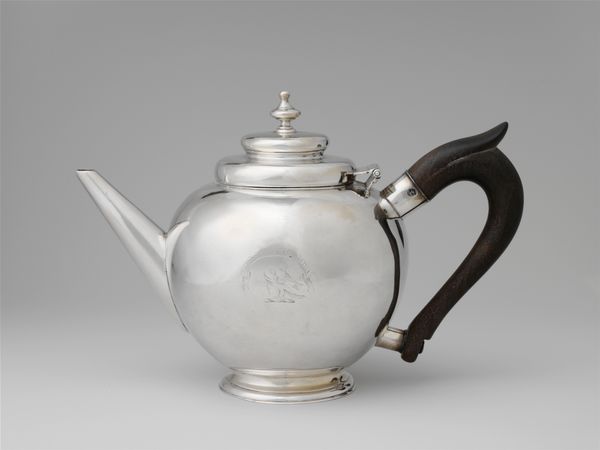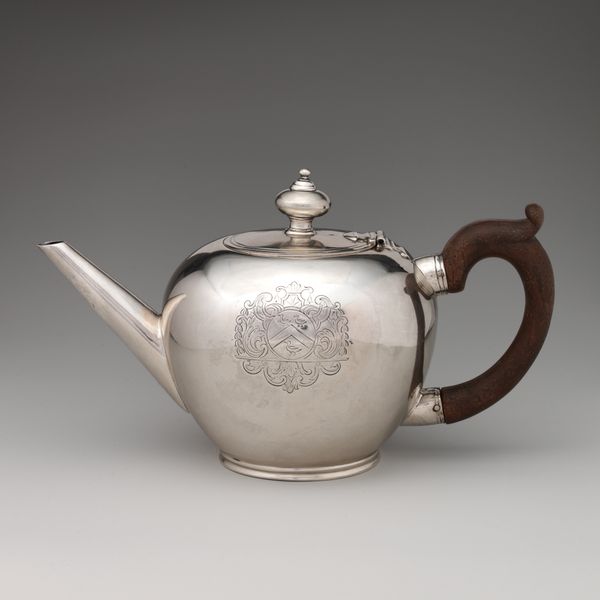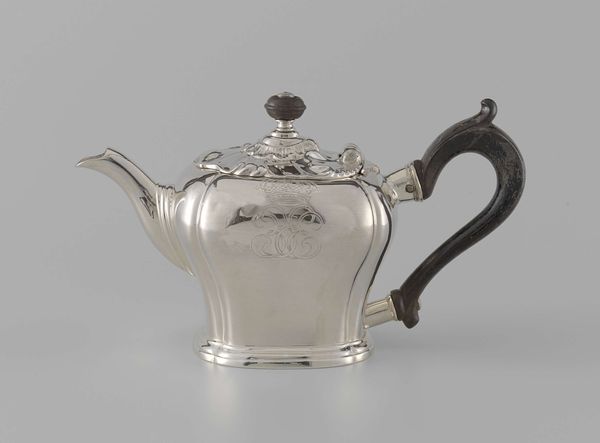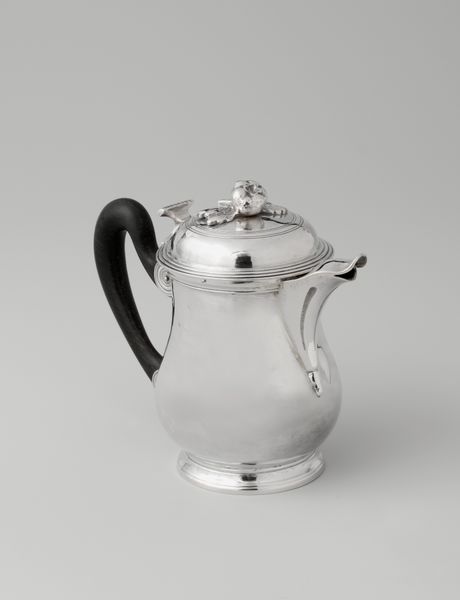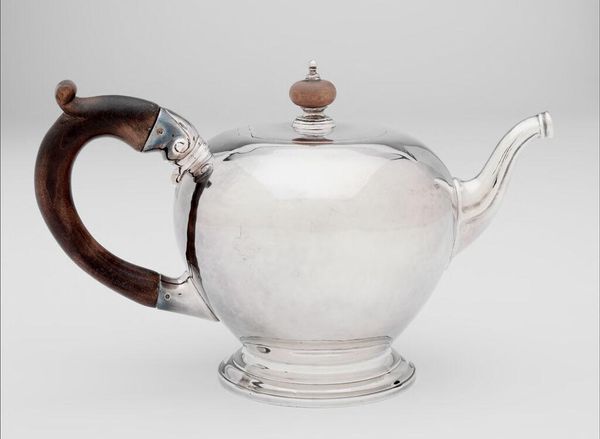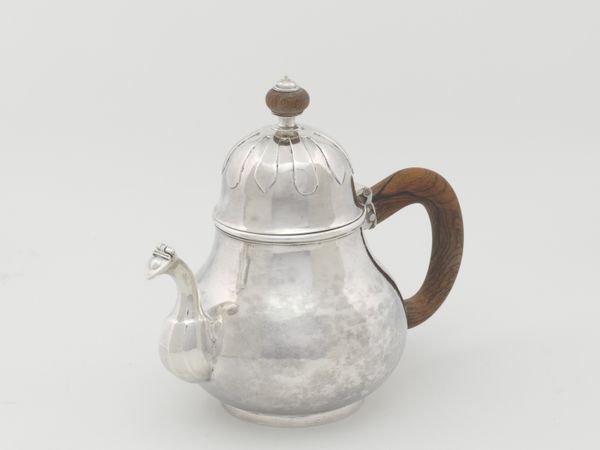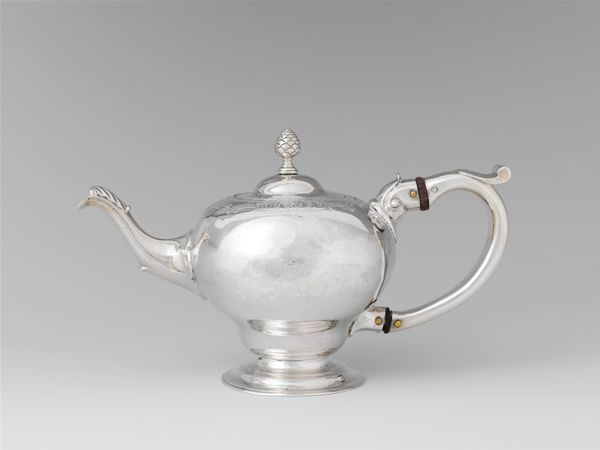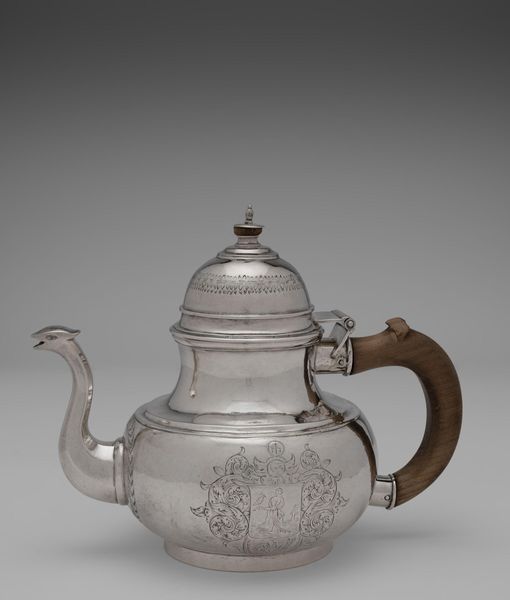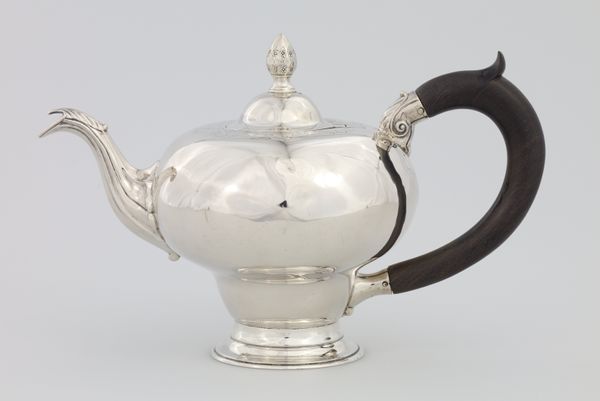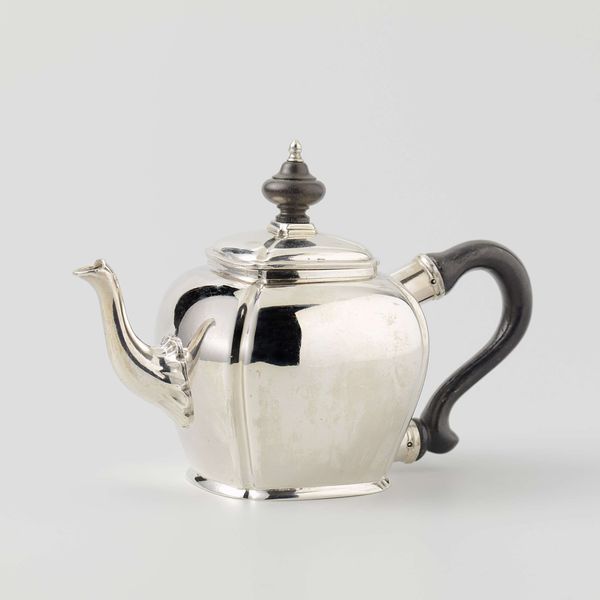
silver, metal, wood
#
silver
#
metal
#
united-states
#
wood
#
decorative-art
#
rococo
Dimensions: Overall: 5 1/4 x 7 5/8 x 4 1/4 in. (13.3 x 19.4 x 10.8 cm); 14 oz. 2 dwt. (438.2 g) Foot: Diam. 3 5/8 in. (9.2 cm)
Copyright: Public Domain
Editor: Here we have Joseph Richardson Senior’s "Teapot" made of silver and wood, dated from 1735 to 1745. It's a charming little object, but it's also quite elaborate, isn’t it? What aspects of the making and social context jump out to you? Curator: What strikes me immediately is the material contrast – the smooth, cold silver against the warm, textured wood. It speaks volumes about production during this time. Editor: How so? Curator: Think about the labor involved. The silversmithing, a highly skilled trade concentrated in urban centers, versus the carpentry, which might have been a more accessible craft. The silver represents wealth and refinement. Where did the silver originate? Who mined it, and under what conditions? The wood connects to natural resources. What kind of trade and infrastructure allowed these disparate materials to converge into a single object? Editor: That's fascinating; I hadn't considered the implications of sourcing! What about its design as Rococo and Decorative Art? Curator: Exactly! It reflects a shift in taste and consumption. The rising merchant class desired luxurious goods, challenging traditional aristocratic dominance. This teapot isn't just for brewing tea. It's a display of status, made possible by complex networks of extraction, manufacturing, and distribution. Every stage involves people, with varied economic and labor power. Editor: It does make you consider how seemingly simple objects are, in fact, indexes of material and social power. I'll never look at decorative arts the same way! Curator: Precisely, and isn't that the power of seeing art through this lens?
Comments
No comments
Be the first to comment and join the conversation on the ultimate creative platform.
